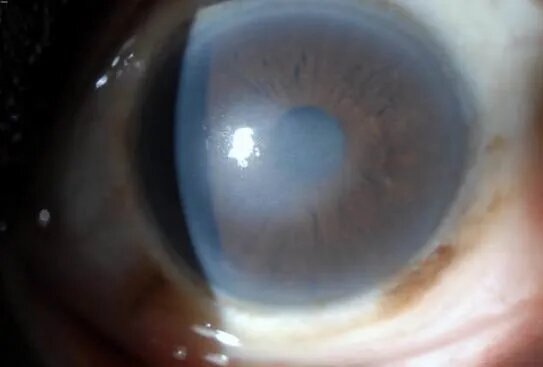


The cornea has multiple layers to it, similar to an onion! The most superficial layer is called the epithelium. This would be akin to the skin on your body. The epithelium sits on a membrane called the basement membrane. Below that is the meat of the cornea, the stroma. Dua’s layer is next, followed by Descemet’s membrane and endothelium. The endothelial cells are responsible for pumping fluid out of the cornea. This prevents it from becoming swollen, cloudy, and vision-threatening.
Trauma can cause the epithelium to tear off the rest of the cornea. When it does, it causes an abrasion. You can think of it as being similar to a skinned knee, just significantly more painful. The pain occurs because as you blink, the eyelids rub against the exposed nerves under the scratch, causing the nerves to fire. The epithelium quite a bit faster than skin, thankfully, so usually these heal pretty quickly and leave no scars behind because they are superficial. Sharp, scraping injuries via a tree branch or fingernail have an increased risk of causing recurrent erosion syndrome.
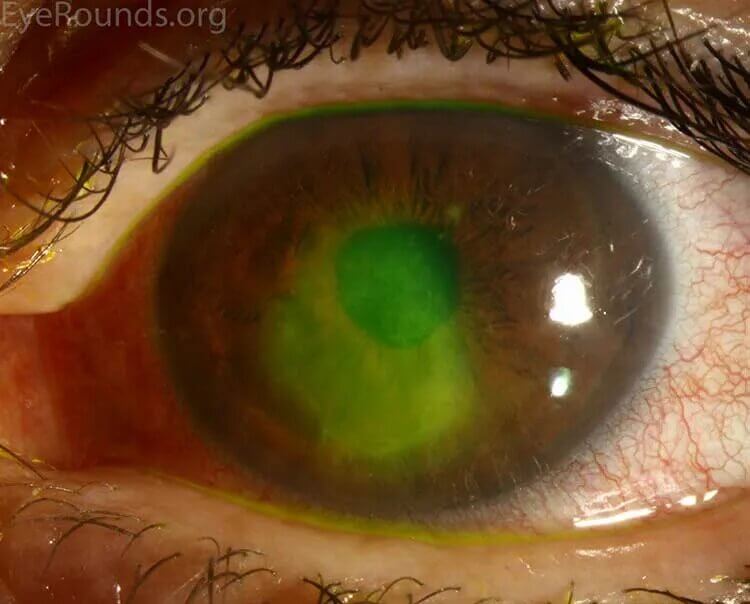
The problem with abrasions is they compromise the normal barrier of protection the cornea usually benefits from. Opportunistic bacteria, fungi and amoebas can get into the stroma of the cornea causing vision-threatening infections. These require antibiotics, as the immune system has a hard time containing the infection at this point. Ulcers can also be caused by the immune system itself, as in the case of autoimmune disorders like rheumatoid arthritis. Unlike corneal abrasions, these do cause scars because of the depth of tissue damage.

Often occurring when involving metal-on-metal activities in the setting of no eye protection. They cause a constant maddening foreign body sensation that occurs with each blink. Metallic foreign bodies do not come out spontaneously and need to be totally removed by an eye doctor. They usually leave a scar behind but are typically not visually significant.
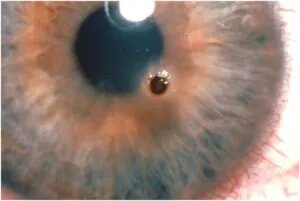
This can either occur because of genetics (corneal dystrophy) or because of a prior injury. The latter is easy to deduce because the symptoms are usually in one eye only and started after a memorable injury. The condition presents as repeat corneal abrasions of various sizes that occur upon awakening in the morning. The eyelid tends to stick to the corneal epithelium and it tears off at the weakest point, which is wherever the abnormal tissue lies. These can be treated with conservative means or by gently removing the bad tissue (superficial keratectomy).
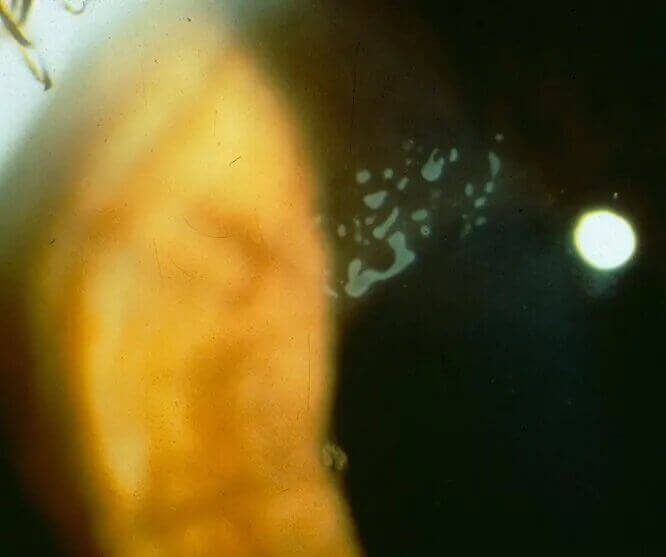
When eyes are inflamed, they can sometimes produce small white nodules on the cornea. They are usually elevated and can cause foreign body sensation and blurry vision, the latter by inducing astigmatism. If bothersome, they can be removed via superficial keratectomy. They are usually caused by inflammatory conditions, most commonly dry eyes and require treatment of this to prevent recurrences.
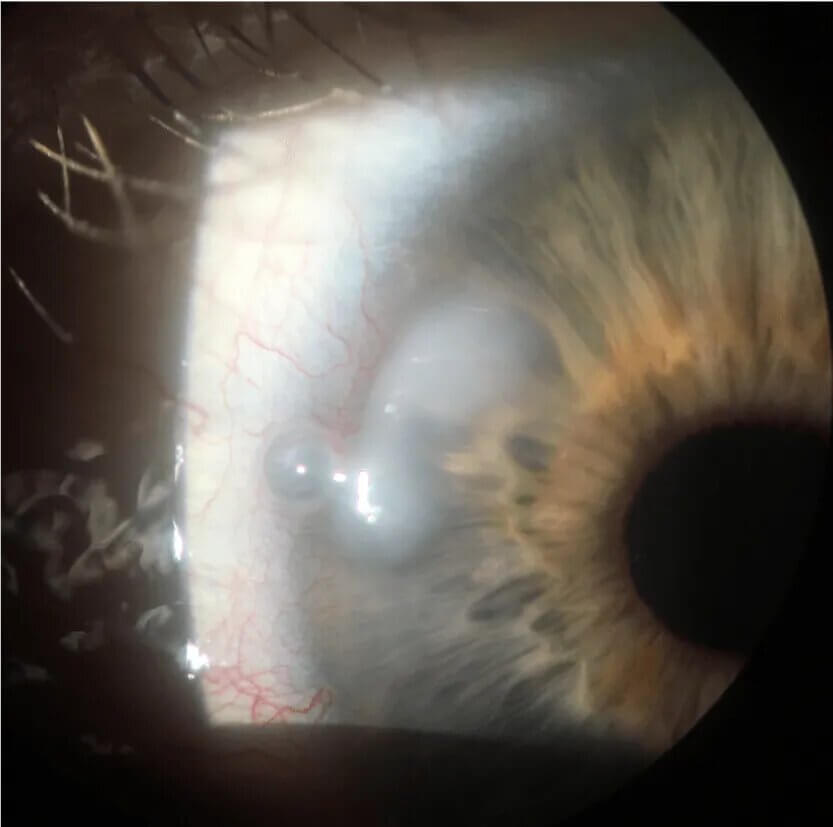
A condition that occurs when the cornea become cone-shaped, instead of its usual curved shape. It likely has a genetic component and is associated with certain common conditions like eczema and sleep apnea. Vigorous eye rubbing may be the underlying cause.
Symptomatically, patients usually complain of blurry vision and a general inability to read things quickly (e.g. the signs on the interstate) with their glasses. Vision seem to be better in soft contact lenses, at least early on, until they start becoming warped.
Early to moderate cases can be treated with corneal cross-linking. This stabilizes progression in most cases and actually improves curvature in ~30% of cases. Rigid gas-permeable contact lenses, INTACs and corneal transplants can also be used to help treat the cornea.

Endothelial cells normally decrease over time. Despite that, we all have enough endothelial cells to last us a lifetime. Even taking into account an expected small acute decrease in the endothelial cell count after intraocular surgery (e.g. cataract surgery), there should still be more than enough cells remaining to keep the cornea clear. Some people are not born with as many cells, so over time and especially after intraocular surgery, they may reach a critically low number. When the endothelial cell count gets too low, the cornea can become swollen and the vision blurry. Additionally, as the endothelial cells become damaged, they can leave guttae behind, which can be visually significant if they are present centrally.
Initially, the vision tends to fluctuate along with the corneal swelling, which is worse upon awakening in the morning. This happens because when the eyes are closed, there is less evaporation and the cornea swells. To help prevent this and stabilize the vision, over-the-counter NaCl drops or ointment can be used at night. Eventually though, surgery may be needed. In cases where the central guttae are the main source of the problem, a small area of bad endothelium can be peeled away and with a few months of drops, the vision can improve. In cases of corneal swelling, a partial corneal transplant may be needed.
